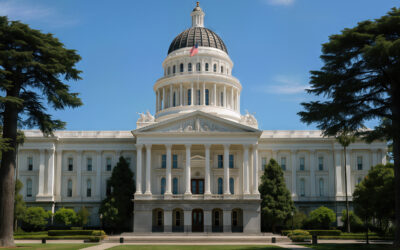Today, the Governor’s Office released the 2025 Master Plan for Career Education, a comprehensive framework intended to align California’s TK-12, higher education, and workforce training systems, with a stated emphasis on rural and underserved communities. While still a policy blueprint, the plan outlines several proposed shifts centered around a regional and collaborative process that could influence curriculum design, funding priorities, student support systems, and how schools engage with regional partners.
Greater Coordination Across Systems
One of the most significant proposals is the establishment of a new statewide coordinating body to bring together education segments, workforce training providers, and employers. For schools, this could lead to more consistent expectations across regions and a clearer role in joint planning with colleges and employers. The plan also emphasizes strengthening local regional collaborations, encouraging school districts to work in tandem with community colleges, four-year institutions, and local industries to develop shared goals and reduce duplication of effort.
Career Pathways Starting in High School
A major focus of the plan is ensuring that all students have access to structured career pathways beginning in high school. These pathways are expected to align with regional workforce needs and provide students with a clear route from school to further education or employment. Schools may be asked to expand or refine dual enrollment offerings, build out work-based learning opportunities such as internships or pre-apprenticeships, and integrate career readiness into academic instruction. Importantly, this approach is intended to extend beyond traditional Career Technical Education (CTE) and aspires to reach a broader population of students, including those not currently enrolled in pathway programs.
“Career Passport” and Emphasis on Skills and Competency-Based Learning
The Plan builds on the concept of a “Career Passport,” a tool that could allow students to document their skills, experiences, and credentials in a format recognized by both educators and employers and to receive credit for prior learning. This points to a broader move toward skills-based education and competency-based learning, where demonstration of mastery could become a more central part of assessment. For schools, this may require rethinking how we document student learning, how we guide course selection, and how we connect classroom experiences to real-world skills.
Work-Based and Hands-On Learning
Instructional practice is also addressed directly. The Plan encourages educators to embed more hands-on, applied learning into the curriculum. This could include project-based learning, service learning, and employer engagement that brings relevance and context to academic subjects. Schools may be asked to partner more deliberately with employers to create these opportunities, particularly in sectors like healthcare, technology, education, and climate, that could lead to attainment of or access to industry certification.
Advising and Student Support Structures
To ensure all students can access and benefit from these opportunities, the Plan highlights the need for robust advising systems. This includes adult mentors and advisors who can help students explore their interests, understand career options, and navigate transitions between high school and college. It also emphasizes supports like transportation, childcare, food access, and housing—recognizing that these basic needs are often barriers to participation, especially for students in low-income or rural communities.
Integrated Use of Data
Finally, the plan envisions stronger use of statewide data systems, such as the Cradle-to-Career Data System and eTranscript California to help track student progress and improve alignment across institutions. This could eventually streamline transcript sharing, support more targeted advising, and enable better visibility into student outcomes beyond high school.
What’s Next?
The Governor’s office couples this Master Plan with January budget proposals and potentially additional funding proposals in the May Revision. This Master Plan does not create specific new mandates, but it signals a direction for future funding, guidance, and program design. The Legislature will have an opportunity to influence the direction of this proposal as it moves through the policymaking process – but this kicks off that dance.
We’ll continue to track how these ideas translate into legislation and will keep you informed about any changes that require district or site-level action. We will also be working with the Administration to ensure that as the Plan is put into action, it builds on current successful TK-12 programs.
You can read the entire Master Plan for Career Education here.




0 Comments